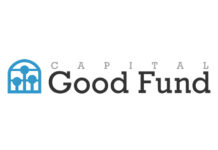Child and Family, a private nonprofit offering social services to children, adults, families and the elderly, has begun construction of a 38,736-square-foot building in Middletown to replace its existing facility.
During a soft economy, a nonprofit undertaking this kind of project would be news on its face. But this new structure is making news for another reason as well: its use of an initiative run by the state’s largest energy supplier aimed at promoting conservation
The nonprofit is taking advantage of a National Grid program that rewards owners of energy-efficient buildings.
“We talked with our architects,” said Ed Jenkins, vice president of operations for Child and Family, “and we told them we wanted the new building to be more efficient. Our architects then told us about National Grid’s program to help us with this. So we met with National Grid, and that kicked the whole project off.”
Child and Family tapped Providence-based Vision 3 Architects to design the project. Keith Davignon, principal at Vision 3, said that National Grid reached out to architectural firms for the program, called Advanced Buildings.
“[They] said, ‘We got a great program but more people need to hear about it,’” Davignon said. And we looked into this and thought the Advanced Buildings program made a lot sense. We’re recommending this program to other clients of ours. People who are forward thinking about operating costs and energy should really like their program.”
The Advanced Buildings program is designed for construction projects of between 20,000 and 100,000 square feet. The idea of the project is to increase energy efficiency and indoor air quality, while adhering to tight construction budgets. The incentive acts like a rebate: The business owner is compensated for additional costs of newer energy systems.
“By participation in our program,” said Francis Boucher, Advanced Building project manager for National Grid, “the business owner gets the maximum level of incentive – basically they pay less for their energy improvements. We provide incentive to pay back the owners in the one-to-three year range for their efficiency improvements – lights and heating, insulation, windows. We pay the additional cost, the lion’s share of the incremental costs.”
In today’s world, words such as sustainability, energy conservation and going “green” are part of the vernacular. National Grid, as a supplier of natural gas and electricity, wants to be at the forefront of the discussion.
“We’ve been helping costumers be more efficient since 1987. We feel it’s very important for all of us to use better fuels and be more aware of how we’re using them,” said Boucher.
Child and Family will be the first company in Rhode Island to use the Advanced Building program. The program has been active since 2006 nationally, and several Massachusetts companies have taken part in it, including Fidelity Bank with its 47,000-square-foot facility in Leominster.
National Grid helps with fiscal aspects, drawing up detailed economic plans that the architects and business owners can mull, including projections of what the entire construction would cost using the standard building practices, contrasting them with projections using the Advanced Building approach.
“National Grid lays the whole thing out,” said Jenkins at Child and Family. “We liked how the numbers turned out with the Advanced Building, and so we went with it. You have to make a substantial up-front investment. The modeling costs money and the architect fees are higher because of the nature of what we were trying to do. But we know we made the right decision.”
Better lighting, better air quality, better windows and insulation and heating systems do cost more than regular systems.
“But these materials aren’t anything exotic,” said Boucher at National Grid. “They are readily available materials – and that drops the cost.”
Once the building is complete this winter, Child and Family will save about 20 to 30 percent on its utility bills. “Because of past projects, we can tell accurately what the return will be. These percentages are what we expect a business owner to see,” says Boucher.
Fidelity Bank’s largest annual energy savings comes in the heating, air conditioning and ventilation systems. The bank saw a 31-percent improvement over standard code construction. Another big area in operating cost savings was in lighting.
When asked about what National Grid gets for participating in the program, Boucher said, “It’s all about a healthy economy. It’s all about the future of energy use. We need to get away from how we look at energy consumption in the short-term. Wise energy use makes the economy stronger.” •
No posts to display
Sign in
Welcome! Log into your account
Forgot your password? Get help
Privacy Policy
Password recovery
Recover your password
A password will be e-mailed to you.












